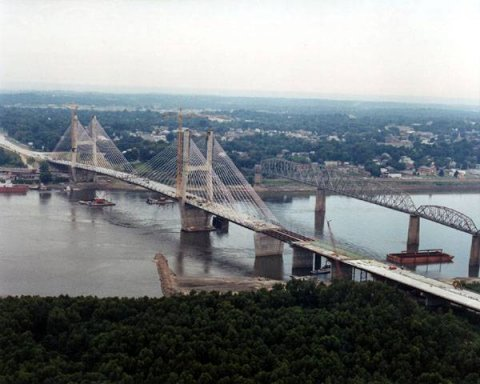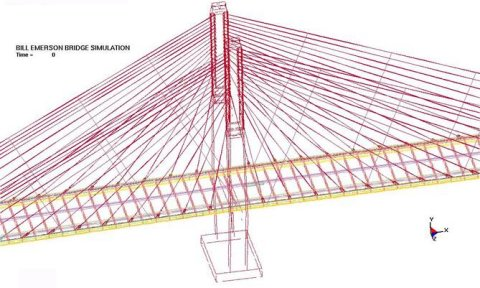Bridge Condition and Performance Assessment
Background
How bridges respond to extreme loading conditions, such as during high winds and severe storms, and to the effects of aging, such as corrosion- and fatigue-induced cracking, is a major concern for the Federal Highway Administration (FHWA). The FHWA is working to ensure that highway structures are safe and reliable under all service conditions, including potential structural, environmental, and human-generated threats.
Role of High-Performance Computing
Under extreme weather conditions, aerodynamic loading couples with the structural movement of the bridge. This could lead to extremely large motions of the bridge deck and supporting cables. Structural modeling and simulation, as well as actual experiments, are needed to characterize this behavior. Coupled computational structural mechanics and computational fluid dynamics on a high-performance cluster computer will lead to a basic understanding of this phenomenon and provide insight for improved bridge designs. Degradation of bridge structural components by cracks, such as those found during bridge inspections, can be modeled on the high-performance cluster to determine how close the bridge is to collapse.

Bill Emerson Memorial cable-stayed bridge in Cape Girardeau, Missouri

A finite-element model of one-half of the bridge developed by Turner-Fairbank Highway Research Center. Using TRACC's high-performance cluster computer, researchers at Turner-Fairbank Highway Research Center and TRACC can perform simulations to gain an understanding of the complex behavior of bridges.
Contact: This email address is being protected from spambots. You need JavaScript enabled to view it.- Computational Structural Mechanics Engineer